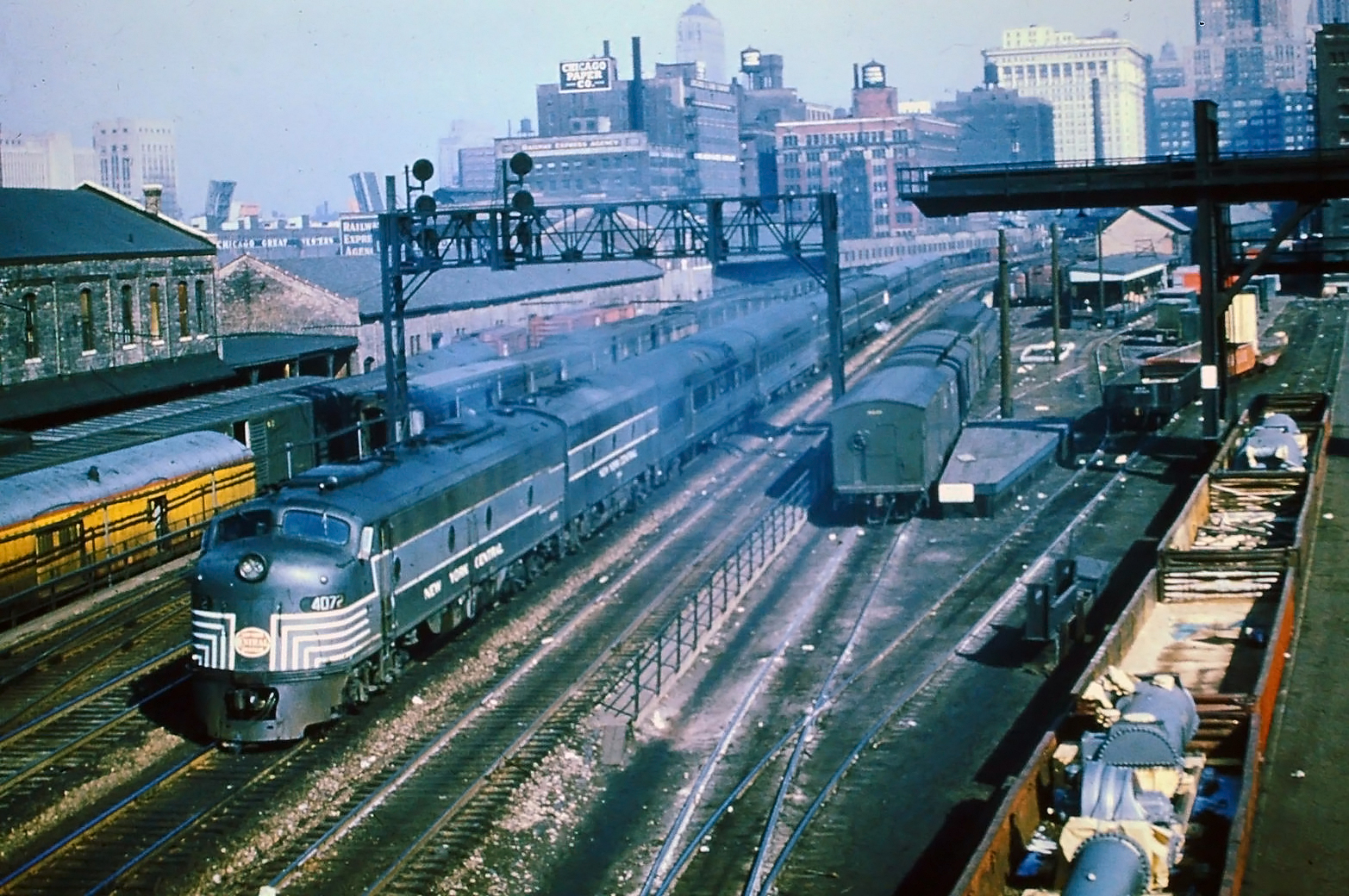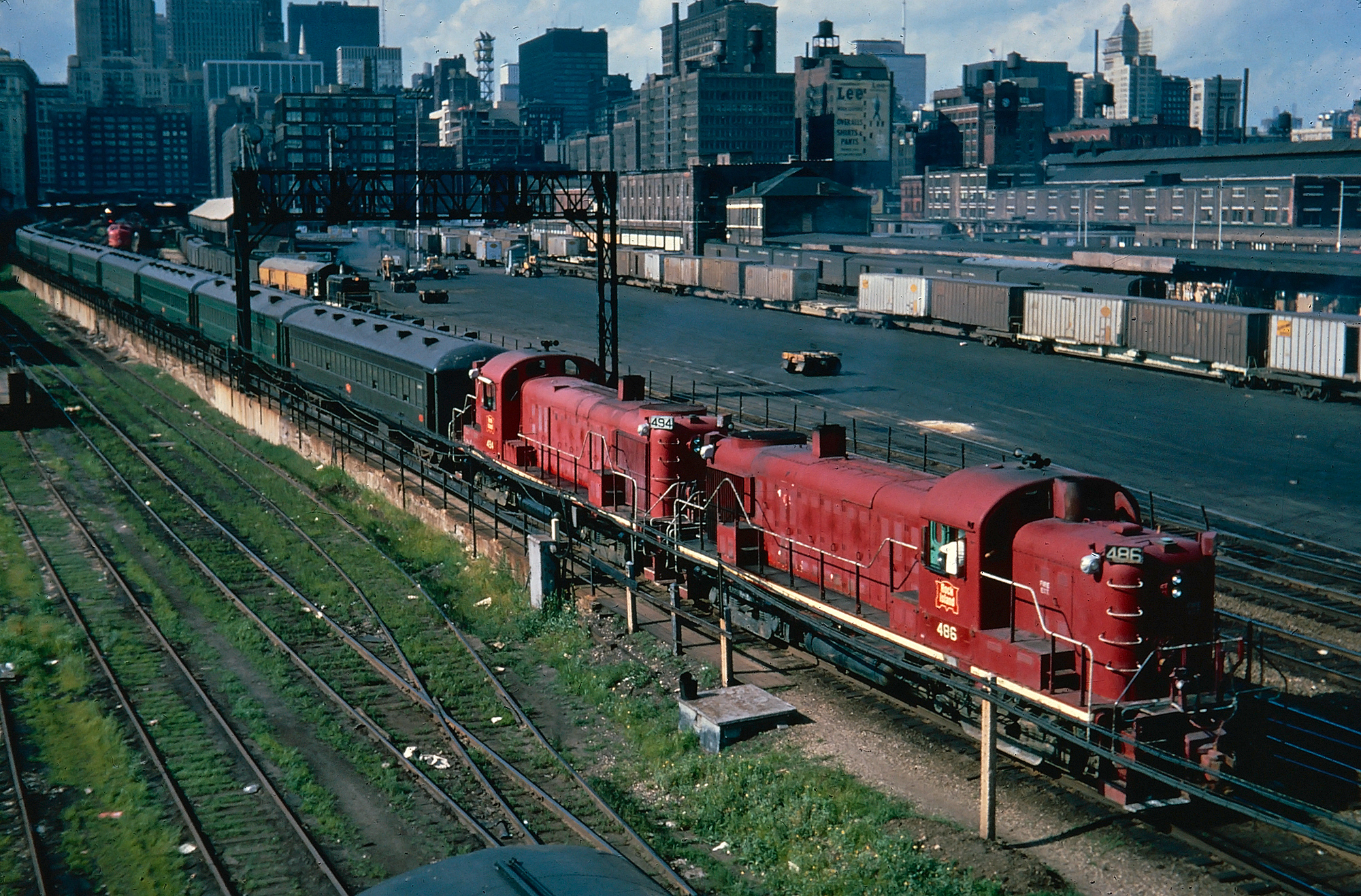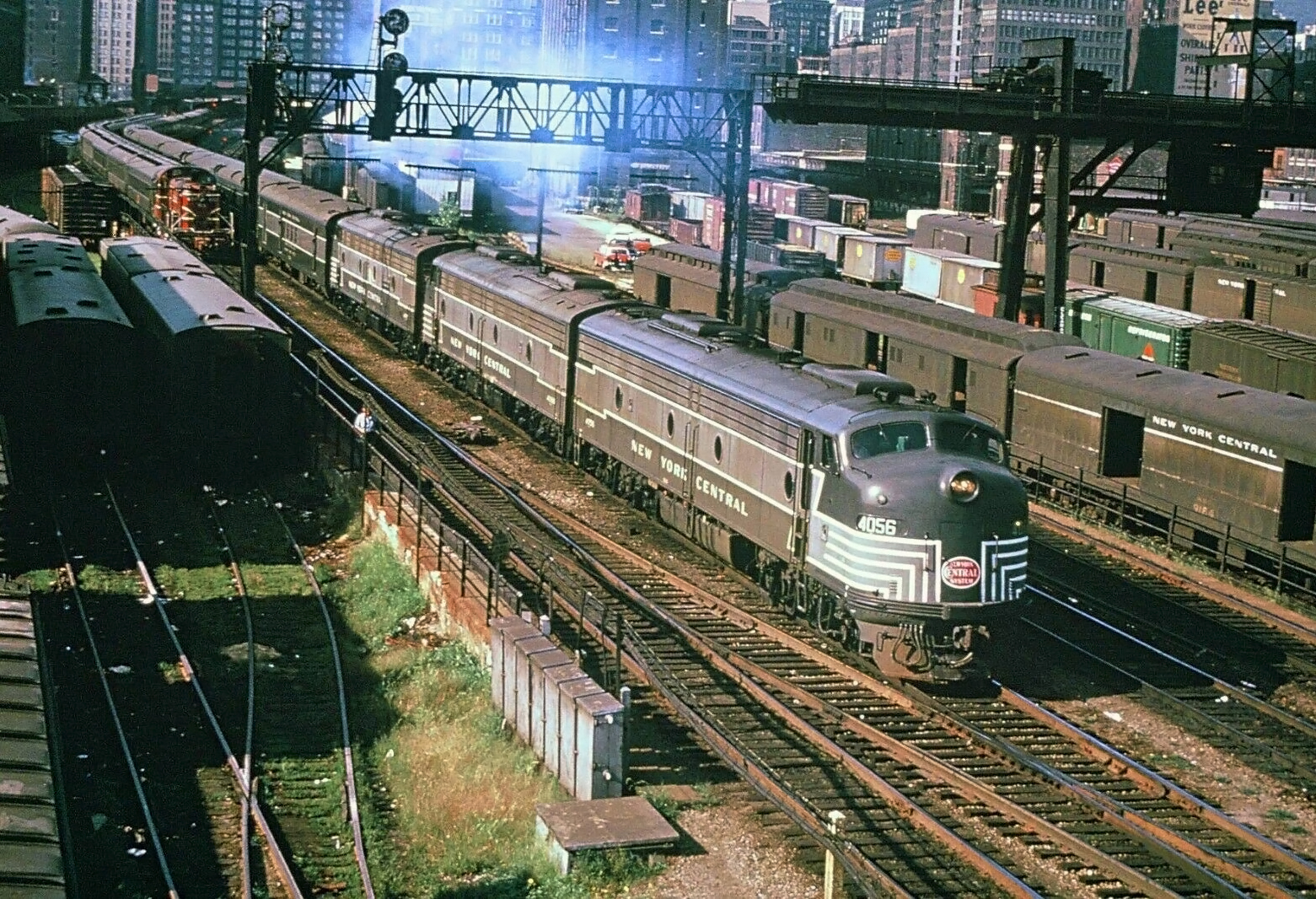LaSalle Street Station: One Of Chicago's Great Terminals
Published: July 14, 2024
By: Adam Burns
LaSalle Street Station, situated in the heart of Chicago, has been a significant hub for rail travel for over 150 years.
This station, located at 414 South LaSalle Street, played an essential role in the city's transportation network, serving as a gateway to and from the bustling metropolis.
Notable railroads to serve the facility included the New York Central, Rock Island, Nickel Plate Road, Monon, and briefly the Chicago & Eastern Illinois.
The history of this site traces back to October 10, 1852, when it first opened its doors with the extension of the Chicago & Rock Island Railroad from 22nd Street.
At that time, the Northern Indiana and Chicago Railroad—later a subsidiary of Lake Shore & Michigan Southern/New York Central—maintained a depot at 12th Street, sharing the space with another Rock Island depot.
By December 1866, a new station emerged, welcoming the Michigan Southern and Northern Indiana Railroad as a co-tenant alongside Rock Island.
Tragedy struck in October 1871, as the Great Chicago Fire decimated the station. In the face of adversity, it was promptly rebuilt.
Eventually, to pave the way for modernization, this post-fire structure was demolished to accommodate a new station designed by the renowned architectural firm Frost & Granger.
Opening on July 1, 1903, this station served until 1981, etching its place in cinematic history by featuring in Alfred Hitchcock’s 1959 classic "North by Northwest," starring Cary Grant and Eva Marie Saint, and the 1973 film "The Sting," starring Paul Newman and Robert Redford.
This article delves into the history, evolution, and present-day use of LaSalle Street Station, reflecting on its past glory and contemporary relevance.
 New York Central E8A #4072 departs Chicago's LaSalle Street Station with the "Motor City Special" (Chicago - Detroit) on March 21, 1956.
New York Central E8A #4072 departs Chicago's LaSalle Street Station with the "Motor City Special" (Chicago - Detroit) on March 21, 1956.Historical Beginnings
LaSalle Street Station’s origins date back to the mid-19th century, a time when Chicago was emerging as a key transportation hub in the United States due to its strategic location.
The original station was built in 1852 by the Chicago & Rock Island Railroad (CRI&R). It was the first station in Chicago to be used exclusively for passenger service, marking the beginning of an era of rail travel that would shape the city’s development.
The early years of LaSalle Street Station were synonymous with rapid expansion and development.
As the CRI&R established its network, the station became a crucial terminal, connecting the Midwest with distant markets and facilitating economic growth.
Architectural Evolution
The original wooden structure of LaSalle Street Station, built in 1852, was modest in comparison to its later iterations. In 1866, a more permanent structure was erected, reflecting the station’s increasing importance.
This new station was designed with a grand waiting room, notable for its exquisite architecture and spacious interior, epitomizing the grandeur of 19th-century rail travel.
By the late 19th and early 20th centuries, LaSalle Street Station witnessed further architectural advancements.
The most significant transformation came in 1903 when a new station was constructed by the Chicago, Rock Island & Pacific Railroad (CRI&P).
This Beaux-Arts style building, designed by architect Frost & Granger, featured a magnificent brick façade and an ornate interior.
The grandeur of the 1903 station symbolized the zenith of railroad prominence in Chicago, representing a beacon of the city’s architectural heritage.
Golden Era of Rail Travel
LaSalle Street thrived during the golden age of railroad travel in the early to mid-20th century. It served as a gateway for countless passengers, connecting them to various destinations across the nation.
Major trains, such as the Rock Island’s Golden State Limited, Rocket fleet, and New York Central’s 20th Century Limited, Wolverine, and others regularly departed from LaSalle Street, enhancing its reputation as a pivotal rail terminal.
The station’s role was not limited to passenger transit. During both World Wars, LaSalle Street Station played a crucial role in transporting troops, supplies, and equipment.
It continued to be a critical node in the national rail network, facilitating the efficient movement of resources that were vital to the war efforts.
 Rock Island RS3s #486 and #494 work an outbound suburban run from Chicago's LaSalle Street Station, circa 1967. American-Rails.com collection.
Rock Island RS3s #486 and #494 work an outbound suburban run from Chicago's LaSalle Street Station, circa 1967. American-Rails.com collection.Decline and Resurgence
The mid-20th century marked a period of decline for LaSalle Street Station, mirroring broader trends in the railroad industry. The advent of the automobile and the expansion of the interstate highway system led to a decrease in passenger rail traffic.
By the 1960s, the once-bustling station saw fewer trains and passengers, and maintenance of the aging infrastructure became increasingly neglected.
In 1981, the original Beaux-Arts structure was demolished to make way for new developments, a decision that marked the end of an era.
The demolition paved the way for the construction of the office tower that stands on the site today, reflecting the city’s shifting focus towards modernization and urban redevelopment.
Despite its decline, LaSalle Street Station never ceased operations entirely. The station saw a resurgence in the late 20th and early 21st centuries as part of renewed interest in rail travel and public transportation.
Present-Day Use
Today, LaSalle Street Station continues to serve as a vital transportation hub in Chicago, primarily functioning as a commuter rail terminal under the management of Metra, the Regional Transportation Authority’s commuter rail division.
The station is the terminus for the Metra Rock Island District line, offering vital service to thousands of commuters traveling between the southwestern suburbs and downtown Chicago.
The current station, located beneath the office tower at 414 South LaSalle Street, is modest compared to its grand predecessors. However, it retains a functional and efficient design that caters to the needs of contemporary commuters.
Modern amenities, such as ticketing services, waiting areas, and retail spaces, ensure that passengers have a comfortable and convenient travel experience.
Metra’s continuous investment in infrastructure upgrades and service improvements has bolstered LaSalle Street Station’s role in the region’s transit network.
The station plays a crucial role in alleviating road congestion and promoting sustainable transportation, aligning with broader urban planning goals.
Impact on Urban Development
LaSalle Street Station’s historical and present-day significance extends beyond transportation; it has profoundly impacted urban development in Chicago.
In its early years, the station spurred economic growth by facilitating the easy movement of goods and people. Neighborhoods surrounding the station thrived, transforming into bustling commercial and residential zones.
The office tower that currently occupies the former station site symbolizes Chicago’s evolution into a modern urban center.
This development demonstrates how historical sites can be reimagined to serve contemporary purposes while retaining their foundational role in the city’s infrastructure.
Future
The future of LaSalle Street Station is intrinsically linked to the broader trends in urban transportation and development. As Chicago continues to grow, the station’s role as a commuter hub is likely to expand.
Plans for enhanced rail services, potential high-speed rail connections, and integration with other forms of public transit could further solidify the station’s importance.
There are ongoing discussions about revitalizing the areas around LaSalle Street Station to foster economic development and enrich the urban landscape.
Enhancing connectivity between the station and other transport modes, such as buses, bicycles, and pedestrian pathways, will be crucial in promoting sustainable and efficient urban mobility.
 New York Central's handsome "20th Century Limited" departs Chicago's busy LaSalle Street Station on a September afternoon in 1962. Note the outbound Rock Island commuter train.
New York Central's handsome "20th Century Limited" departs Chicago's busy LaSalle Street Station on a September afternoon in 1962. Note the outbound Rock Island commuter train.Conclusion
The history of LaSalle Street Station is a testament to Chicago’s dynamic evolution from a burgeoning 19th-century city to a modern urban powerhouse.
From its humble beginnings in 1852 to its present-day role as a crucial commuter hub, LaSalle Street Station has continually adapted to the changing needs of the city it serves.
While the original grand structures may no longer stand, the legacy of LaSalle Street Station endures, reflected in the bustling activity of commuters who pass through its doors each day.
As Chicago looks to the future, LaSalle Street Station will undoubtedly remain a vital component of the city’s transportation infrastructure, linking the rich history of rail travel with the innovative possibilities of tomorrow.
Recent Articles
-
A Murder Mystery Dinner Train Ride On Pennsylvania's M&H Railroad
Oct 21, 25 12:50 AM
Among their special events, the railroad’s murder mystery dinner train experiences are perennial crowd-pleasers—part theater, part culinary outing, and entirely memorable. -
A Murder Mystery Dinner Train Ride In Florida That Started It All!
Oct 21, 25 12:41 AM
Tucked into the heart of Fort Myers, Seminole Gulf Railway is one of those rare regional railroads that does double duty—and does both jobs well. -
Nevada's ~Murder Mystery~ Dinner Train Rides
Oct 20, 25 11:50 PM
Seamlessly blending the romance of train travel with the allure of a theatrical whodunit, these excursions promise suspense, delight, and an unforgettable journey through Nevada’s heart.



